Loss and Damage Fund at last, but win is in the details
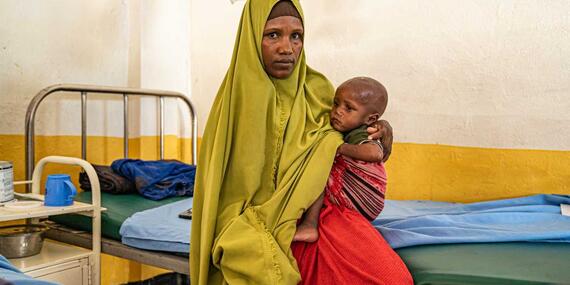
by Jaspreet Kindra, OCHA
“Will we survive this drought or are we going to die from hunger and starvation?”
Ruqiyo Iman Mohamed, a young mother of four in Somalia, recently put those questions to an OCHA colleague, Yao Chen. “I do not know what to hope for anymore,” she added.
She was a small-scale farmer in Somalia who, because of the drought in the country, lost all her assets, including her farm, which was her only source of income and her only way of life.
In early November, the world finally listened to people affected by climate change, such as Ruqiyo, at the twenty-seventh meeting of the Conference of the Parties (COP27), which signed the United Nations Framework Convention on Climate Change (UNFCCC). After many years of discussions, world leaders formally agreed to set up a Loss and Damage Fund during COP27 held in Sharm El-Sheikh, Egypt
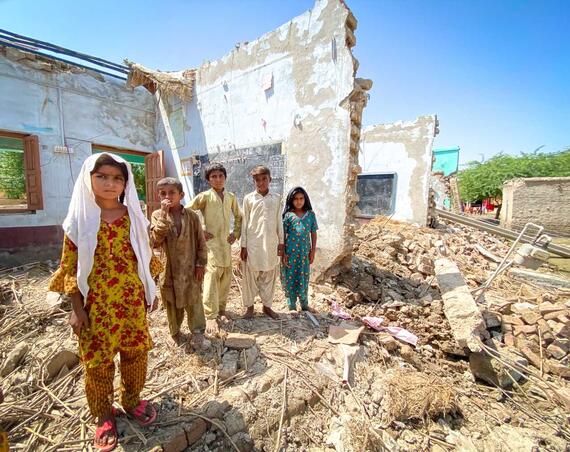
Such a fund is now desperately needed. The Intergovernmental Panel on Climate Change (IPCC) has now officially recognized that, as the Earth faces an unprecedented rate of warming, people will be or are already being exposed to situations they can neither adjust nor adapt to. They include people like Ruqiyo, whose hopes of ever recovering from four consecutive failed rains are now destroyed.
Developing countries and climate activists hope that the new Loss and Damage Fund will achieve its aims: to support people like Ruqiyo to recoup their losses, find an alternative source of income and better prepare for future shocks.
But will it? The win for people such as Ruqiyo would lie in the nitty gritty of the fund.
I asked a series of questions about the new fund to a cross-section of long-term civil-society activists and advocates. They included questions on how to design the fund so that it can better provide meaningful answers to Ruqiyo’s questions.

How do you envisage this fund?
Two prominent civil-society climate activists I spoke with are in favour of a fund under the UNFCCC umbrella.
Saleemul Huq is a senior scientist from Bangladesh and lead author of the adaptation chapters in the third and fourth IPCC assessment reports. One of the fund’s earliest advocates, Huq is involved in supporting climate change negotiators from the least-developed countries.
He reckons: “We will probably end up with a set of different funds including existing ones, and that may address various kinds of loss and damage.” But Huq favours a new fund under UNFCCC for “specific human-induced climate change impacts, such as sea-level rise causing forced displacement and migration, for which there is no existing system in place.”
Harjeet Singh is Head of Global Political Strategy at Climate Action Network-International, has been a leading voice for the fund in the international humanitarian community for decades.
He believes it should be placed in a new climate finance architecture under the UNFCCC. He suggests the new architecture will “operationalize the third and missing arm of climate finance – that of addressing loss and damage.”
Singh says the fund should serve as a coordination and financing mechanism. It should be the “primary vehicle to coordinate, mobilize and channel new, additional, adequate and predictable financial resources” for affected countries and communities.
Others feel there are lessons to be learned from existing climate funds under the UNFCCC.
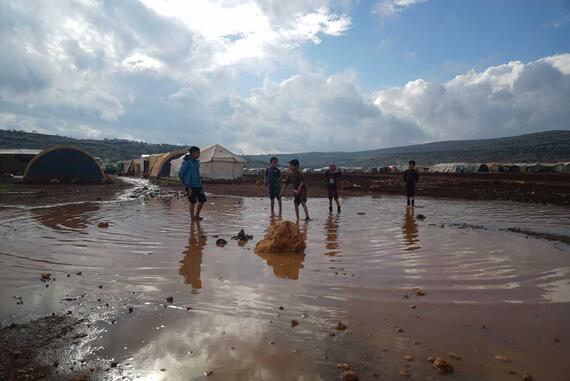
Balgis Osman-Elasha is a climate scientist from Sudan and a climate expert with the African Development Bank.
She reasons that the fund should “be more accessible through more simplified operational procedures, criteria and conditions” for the main beneficiaries, such as fragile countries that have low capacity to process this finance. She suggests building on lessons learned from vulnerable countries’ experiences in accessing resources from other climate funds, such as the Green Climate Fund and the Adaptation Fund.
Ritu Bharadwaj leads the climate governance and finance team of the UK-based International Institute for Environment and Development, which supports and trains climate change negotiators from least-developed countries.
Bharadwaj points out that no one wants to replicate the way existing climate funds are managed and delivered: “centralized and mired with the issues of access, delay in disbursement, disconnect with national- and community-level priorities and limited finance.”
Therefore, she says the Loss and Damage Fund must be “grounded in the everyday realities of loss and damage risks and tailored to the vulnerabilities of different people and places to different hazards over time.”
Bharadwaj is all for moving away from a centralized approach to a more decentralized one – “managed at the national and sub-national level.” She reasons this approach will make the fund “responsive to local people’s priorities over different time frames and will be spent more efficiently.” But she believes that if there is one fund, then the governance should be with the UNFCCC.
The fund should also fortify fragile countries against future impact and not finance pilots or capacity-building, says Osman-Elasha. “An important consideration here is to ensure that this fund is new and additional to the adaptation funds, and that it will provide grants and not loans.”
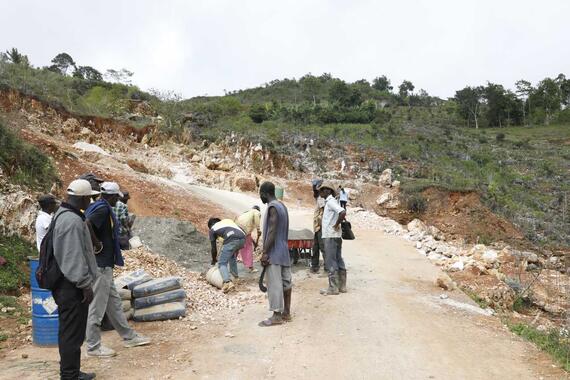
What should be the ground rules for the fund?
Yes, the funds should be public money and grant based, says Singh. He believes that overarchingly, loss and damage finance should adhere to certain principles. These would include international solidarity, historical responsibility and the polluter-pays principle. He has a long wish list. Yes, the fund needs to be new and additional to other climate funds. It should also be needs based, adequate, predictable and precautionary.
According to Singh, the fund should be locally driven, responsive to gender and equitable representation.
A long-term advocate for the Loss and Damage Fund, Doreen Stabinsky, Professor of Global Environmental Politics at US-based College of the Atlantic, also believes that the new fund should be grant based. But she is pragmatic in her outlook, saying that the process to set up the fund over the next year will be “extremely political.”
She believes that ideally, the fund should finance loss and damage following both extreme and slow-onset events, perhaps through separate windows or channels.
“What is needed is a fund with significant capitalization so that a country experiencing an event like the floods in Pakistan would have access to an amount of money commensurate with the scale of the damage. In the case of Pakistan, that's tens of billions of dollars,” says Stabinsky.
All this is “essential” but at the same time “extremely difficult given developed-country disinterest in having a fund at all, because it very much implicates them as responsible for loss and damage.”
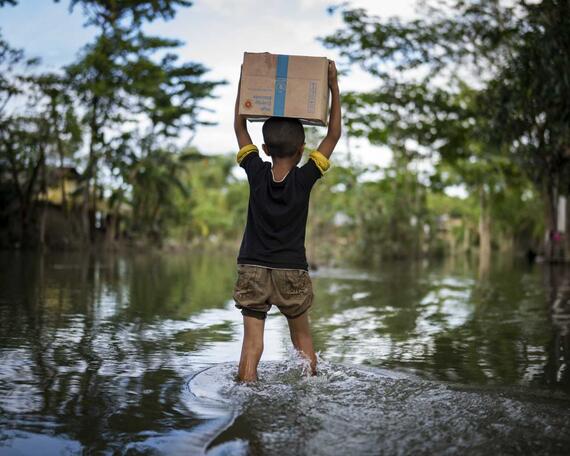
How would the funds flow to fragile countries, like Somalia, that are also desperately in need of such finance? These countries have not even received their share of adaptation funds, as they are told they do not have the infrastructure and capacity to process the funds.
Osman-Elasha and Singh offer solutions to this.
Osman-Elasha suggests awarding funds to regional projects and programmes in vulnerable countries in the Greater Horn of Africa and Small Island Developing States that provide for sharing responsibilities with Governments and development partners.
This will “facilitate the management of the funds” as well as contribute to “capacity-building –learning by doing,” she says.
Singh sees the fund as a flexible mechanism that could provide direct access to vulnerable countries like Somalia through regional, national and sub-national entities, as needed and requested by the recipient countries.
When a vulnerable country declares a “loss and damage event,” a request for funding support could be triggered, which would be based on an agreed criteria and verified by independent technical experts that could be housed under the Loss and Damage Fund, Singh explains.
“Such funding should not require a detailed implementation plan or proposal, but instead be provided in the form of direct and unconditional budget support to the recipient country to aid relief, recovery and rehabilitation efforts with adequate safeguards in place. “The fund should also allow access through international entities, such as the UN bodies, while building their capacity for direct access,” he suggests.
Bharadwaj suggests an approach where the funds are allocated based on a transparent global index of all countries that shows which are most at risk to climate impacts, and then allocates the funds based on compensatory justice.
Huq also agrees that, of course, fragile and most vulnerable countries should be prioritized for receiving loss and damage funds. He suggests “pre-positioning funds with those countries at national or even local level.”
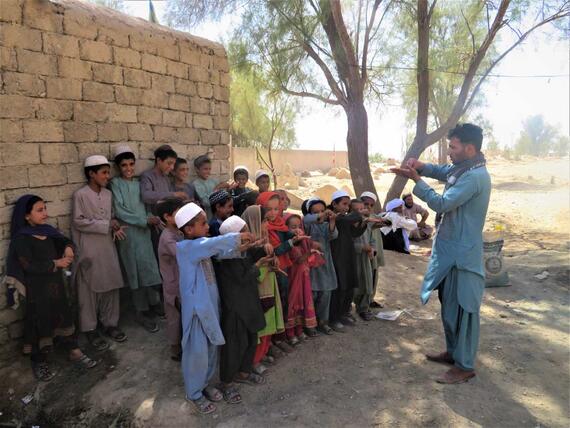
Do you think there should be a Loss and Damage Fund for each country to help process it according to their specific context? It could be something like what OCHA set up – the OCHA-managed humanitarian pooled funds, and the Somalia Humanitarian Fund for a fragile country like Somalia. (The pooled funds allow donors to pool their contributions into a single, unearmarked fund to support local humanitarian efforts).
Huq says the OCHA-managed pooled funds are a good example to build on. “Each vulnerable developing country should certainly be encouraged to set up its own fund to respond to their own circumstances.”
Bharadwaj agrees on the need for the fund to be at the national level. But at the same time, it needs to have a strategy in place that cuts across Government and society, with pre-defined local distribution mechanisms as well as a bottom-up approach. She believes it should incentivize action, tackling non-economic as well as economic loss and damage. It should be easily accessible to the most “adversely affected, without barriers.”
She underlines that payments should be made in anticipation of needs and not “post facto and ad hoc.” She adds: “We will also need to be conscious that countries will need to learn and adjust, need to build institutional capabilities [local and national] to work this through.”
Singh is in favour of funds being used to address the needs of the most vulnerable and marginalized communities, including through existing regional and national pooled funds. “Such funds must have appropriate monitoring and evaluation processes that enhance local ownership and decision-making,” with the Loss and Damage Fund as the key oversight mechanism.
He adds: “This will enable the fund to coordinate, track and account for finance to address loss and damage from new and existing funds, both under and outside UNFCCC.” It would also determine additional finance needed to do the job.
Osman-Elasha’s approach is slightly nuanced. She thinks that rather than dedicate a fund for each country, “the fund should aim to facilitate the accreditation process of national implementing entities. Countries should be asked to identify a national entity to be accredited as a Loss and Damage Fund implementing entity to facilitate the access to the fund, based on national priorities.”
Then certain mechanisms or policies should be put in place to ensure the funds reach affected people at any level, especially in rural areas and marginalized communities, she adds.
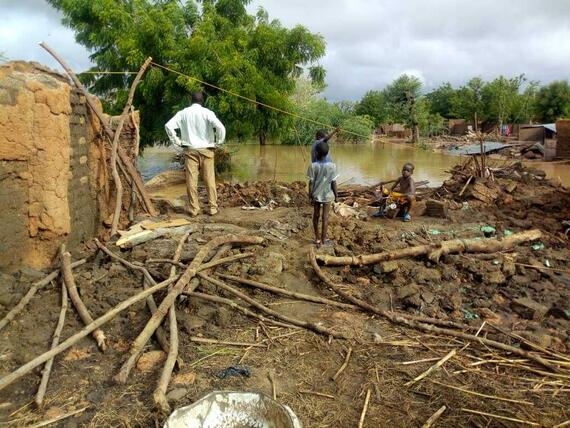
If you have one fund, where should it be based? I guess ideally in the global South?
Osman-Elasha, Singh and Bharadwaj all believe that if there is one fund, it should be based close to the clients.
Osman-Elasha says “this one should be based in Africa, since it is the continent most vulnerable to climate change impacts and with the highest number of fragile States.” Besides, Asia has a fund already: the Green Climate Fund, based in Seoul, South Korea.
Singh says the fund’s secretariat must be in “a global South country to ensure that it is closer to the realities of vulnerable communities in the developing countries facing climate emergencies.”
Bharadwaj says that if it is one fund, it can be governed through a centralized approach, which should then ideally sit with the UNFCCC. But to be effective, it needs to be managed and administered at national level.
And Huq says: “If there is a new fund, it should be under the governance of the UNFCCC and decisions made by consensus.”
In his remarks at COP27, the Under-Secretary-General for Humanitarian Affairs and Emergency Relief Coordinator, Martin Griffiths, urged the humanitarian community to be more “vocal” in 2023 in advocating for climate money for the people it serves.
“Because, so far as we can see, that’s not happening yet,” he said. “And I want to stress that this is not an attempt by the humanitarian community to grab climate funding for our own operations. It’s principally saying we need climate funding to help people, not our operations. That’s what resilience is about.”
And Ruqiyo could use some of that.
